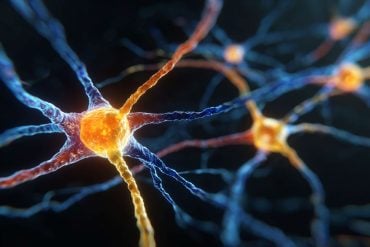Summary: Researchers have uncovered how the brain’s immune cells, called microglia, can act as protectors rather than destroyers in Alzheimer’s disease. By lowering the immune regulator PU.1, microglia began expressing lymphoid-like receptors that reduced inflammation and preserved cognitive function in mouse models.
Removing CD28, a key receptor on these protective cells, reversed the benefit—accelerating plaque buildup and neuroinflammation. The discovery of this PU.1–CD28 signaling axis reveals a new immune mechanism in Alzheimer’s and opens the door to targeted microglia-based therapies.
Key Facts
- Protective Microglia: Reducing PU.1 levels activated neuroprotective microglia that limited inflammation and preserved cognition.
- CD28’s Role: Deleting CD28 disrupted this protection, accelerating brain inflammation and plaque formation.
- Therapeutic Potential: The PU.1–CD28 axis offers a promising target for Alzheimer’s immunotherapies.
Source: Max Planck Institute
Using Alzheimer’s mouse models, human cells, and human brain tissue, the researchers demonstrated that lowering PU.1 promotes the expression of lymphoid immunoregulatory receptor proteins on microglia.
Despite being present in small numbers, these neuroprotective microglia exert a brain-wide suppressive impact on inflammation and protect cognitive function and survival in mice.

Deleting CD28 from this small subset of microglia amplified inflammation and accelerated plaque growth, highlighting CD28’s key role in protective microglial activity.
“Microglia are not simply destructive responders in Alzheimer’s disease— they can become the brain’s protectors,” said Anne Schaefer, the senior author of the paper and leader of the project.
“This finding extends our earlier observations on the remarkable plasticity of microglia states and their important roles in diverse brain functions. It also underscores the vital importance of international collaboration in advancing scientific progress.”
“It is remarkable to see that molecules long known to immunologists for their roles in B and T lymphocytes also regulate microglial activity,” added Alexander Tarakhovsky.
“This discovery comes at a time when regulatory T cells have achieved major recognition as master regulators of immunity, highlighting a shared logic of immune regulation across cell types. It also paves the way for immunotherapeutic strategies for Alzheimer’s disease.”
The study builds on pioneering genetic work by Alison Goate, a senior co-author of the study, who identified a common variant in SPI1—the gene encoding PU.1—as being associated with reduced Alzheimer’s risk. “These results provide a mechanistic explanation for why lower PU.1 levels are linked to reduced Alzheimer’s risk,” said Goate.
The discovery of the PU.1–CD28 axis establishes a molecular framework for understanding protective microglial states and highlights the potential of microglia-targeted immunotherapies to modify the course of Alzheimer’s disease.
Key Questions Answered:
A: The study showed that lowering the protein PU.1 activates a small population of microglia that suppress inflammation and protect the brain from Alzheimer’s-related damage.
A: Deleting CD28 from these protective microglia caused inflammation to surge and plaques to grow faster, revealing CD28’s essential role in maintaining brain-protective immune activity.
A: The findings identify a new molecular pathway—the PU.1–CD28 axis—that could be targeted by future immunotherapies to slow or prevent Alzheimer’s progression.
About this Alzheimer’s disease research news
Author: Maren Berghoff
Source: Max Planck Institute
Contact: Maren Berghoff – Max Planck Institute
Image: The image is credited to Neuroscience News
Original Research: Open access.
“Lymphoid gene expression supports neuroprotective microglia function” by Anne Schaefer et al. Nature
Abstract
Lymphoid gene expression supports neuroprotective microglia function
Microglia, the innate immune cells of the brain, play a defining role in the progression of Alzheimer’s disease (AD). The microglial response to amyloid plaques in AD can range from neuroprotective to neurotoxic.
Here we show that the protective function of microglia is governed by the transcription factor PU.1, which becomes downregulated following microglial contact with plaques.
Lowering PU.1 expression in microglia reduces the severity of amyloid disease pathology in mice and is linked to the expression of immunoregulatory lymphoid receptor proteins, particularly CD28, a surface receptor that is critical for T cell activation.
Microglia-specific deficiency in CD28, which is expressed by a small subset of plaque-associated PU.1low microglia, promotes a broad inflammatory microglial state that is associated with increased amyloid plaque load.
Our findings indicate that PU.1low CD28-expressing microglia may operate as suppressive microglia that mitigate the progression of AD by reducing the severity of neuroinflammation.
This role of CD28 and potentially other lymphoid co-stimulatory and co-inhibitory receptor proteins in governing microglial responses in AD points to possible immunotherapy approaches for treating the disease by promoting protective microglial functions.






